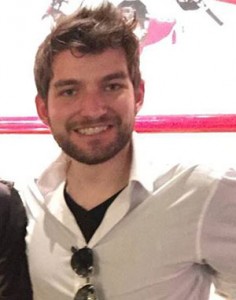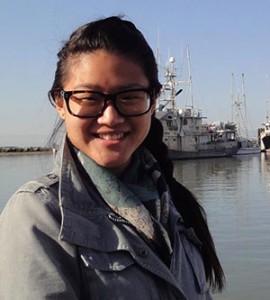The CBR is excited to introduce a new program that combines outreach, teaching and science communication – all into one neat package. Two months ago, four CBR graduate students formed the Outreach Founding Committee and undertook designing fun lab activities for high school students. To differentiate themselves from other similar initiatives, the CBR outreach focuses specifically on blood-related labs.
The first two labs that are now offered by the CBR “Blood Labs” are the “DNA from Strawberries” and the “Edible Blood Clots”. Currently, the program has upward of two dozen classes to deliver and the teachers are eager for more fun ideas. The program is now growing and accepting new members to undertake the existing labs or to develop their own!
Matt Budd and Deb Chen did their first visit on Tuesday morning, where they presented to 3 classes for grades 11 and 12 at the Kitsilano high school. Here, they talk about their experience, challenges and ideas around outreach.
A.S. As a scientist, what draws you to outreach activities, such as the “Blood Labs” at CBR?
M.B. I’m drawn to any opportunity to teach, especially when it involves a more hands-on approach than your typical lecture. What’s exciting about the CBR outreach program is that we’re given the opportunity to design our activities from beginning to end. It’s a satisfying feeling not just to have creative control over your project, but to see that students are enjoying an activity you designed yourself. It’s also great that we can tie these activities into the research we do in our day-to-day graduate work, and to see the genuine level of interest students have in our projects.
D.C. I think the ultimate reason in seeking out these opportunities is to expand my teaching experience, both formally and informally. One of my goals in engaging in teaching is to help others cultivate a sense of ownership and discover their intrinsic desire to learn. Through these outreach programs and workshops, I can experiment with different ways to inspire curiosity and to motivate students to explore science and beyond.
A.S. Tell us a bit about what you actually did with the students in the DNA extraction lab.
M.B. We started off by asking students to construct a model of DNA using craft supplies. Each student team was given an opportunity to present their DNA model to tell us what they knew about DNA. Then we had students extract DNA from strawberries using a solution of dish soap, salt, and water, and eluting using cold isopropanol. We followed with a mini-lesson on how and why the experiment worked at the cellular level, and why we chose to use strawberries for this activity (fun fact – most strawberry species are octoploid, so the DNA is easy to see).
A.S. What did you find challenging when bringing a science lab to the high school students?
D.C. The biggest challenge for me was making scientific concepts accessible, relevant, and fun to a diverse group of students. I found that relating the science concepts to students’ real life experience: for example, explaining solubility of DNA in isopropyl alcohol by relating it to adding a full cup of sugar to their favorite hot chocolate drink, allowed students to really grasp the concept and made them more interested in asking questions and in providing their own analogies.
M.B. I agree with Deb, the most challenging part of any teaching experience is finding ways to engage every student in a way that will speak to them. Some students just have more innate interest in the subject matter than others. To me, the challenge lies in finding ways to make the subject matter interesting and relevant, so that each student comes away from the activity having not just learned something, but also being able to retain it for later.
A.S. Can you share some highlights where you felt that you really inspired the students’ interest?
M.B. The students seemed to particularly enjoy the creative activity components of our lab, making their own models of DNA. I think this style of learning works for people because students have to think of ways to piece their knowledge together to form ‘big picture’ ideas. Having to describe these models in a short presentation also called upon the students’ ability to communicate their ideas, which, as any scientist will tell you, is just as important as the ideas themselves.
A.S. Did this experience give you a new perspective on engaging with science going forward?
D.C. My main take away from this experience is to continue to challenge myself in finding creative ways to make science fun and accessible through various avenue – whether that is teaching science to high school students, mentoring undergraduate students, or writing knowledge translation articles for the general public. For me, this outreach opportunity really highlighted that “marketing” science is every scientist’s responsibility.
M.B. It definitely taught me a lot about my own teaching style, and the kinds of methods that work for students. I would highly recommend the CBR outreach program to anyone looking to get their feet wet in teaching, or to build on their public speaking and leadership skills. It was also a fantastic exercise in coming up with ways to bring your own research to a level outside the graduate-level sphere. I can’t thank the CBR enough for providing this opportunity, and I can’t wait to see all of the exciting and creative ideas people will bring to this program in the future.
Front page image credit: Horia Varlan on flikr




